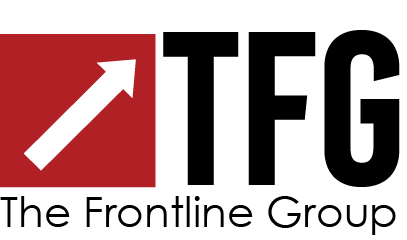Ensuring safe, reliable operations
"Inherent risk" means every process, every job, every project — regardless of the industry—comes with risks ranging from simple efficiency losses to major catastrophes. TFG consultants have more than 100 years of combined experience in risk management methodologies for processes and equipment found in the most extreme of locations—from 30,000 feet under the ocean to 30,000 feet in the skies. Risk will always be present, but you can reduce exposure through time-tested TFG prevention, mitigation, and response best practices.
IMPROVING PROCEDURES TO REDUCE HUMAN ERROR
"Human error" is the overused catch-all term found in most Root Cause Analysis reports. When this "cause" is found, most investigations stop - a mistake that risks future failure. Investigators that are satisfied to ascribe incidents to human error and halt further investigation miss the opportunity to capture the true source of the event, the lesson to be learned, and the corrective measures to be implemented. This means individuals and organizations are prone to make the same mistakes repeatedly.
TFG has found the true root cause of many "human error" incidents lies in poorly written procedures. Procedures often contain hidden assumptions, omit applicable cautions and warnings, and use language inconsistently. In addition, procedures rarely include quality assurance mechanisms that catch human error due to distractions, fatigue, complacency, and memory failure.
In 2014, TFG worked with one of our global oilfield customers to create standardized procedures and safety-critical checklists. By applying both well-tested best practices in Health, Safety, and Environmental Risk Management and TFG’s legacy methodologies, the company achieved major successes including:
- A 16% reduction of non-productive time (NPT) across operations globally
- A 53% improvement of perforating gun misfire rate from 1:34 to 1:72 for a monthly savings of $1.4 million dollars and an annual savings of $16.8 million
- Restoration of business reputation
- Zero incidents while working with high pressure
These procedures focused on creating a process network that supports the Learning Organization while minimizing the risk of human error. Time Outs For Safety (TOFS) were developed to pause and review upcoming risks and hazards for each next phase of work. Visual aids were introduced to assist with highly complex procedures, and the culture of the crew was adjusted to drive consistently repeatable operations.
TFG can help you create an organization that reduces common preventable errors during routine work, saving millions of dollars through efficiency.
Let us help you do business, better.
TO LEARN MORE ABOUT OUR
OPERATIONAL INTEGRITY OFFERINGS
RISK MANAGEMENT
- Risk Management for Design & Operations
- Management Systems (Operating, Process Safety, Barrier)
- Quality Assurance/Quality Control
- Root Cause Analysis & Remediation
- Qualitative (HAZID, HAZOP, BowTie, etc.) Risk Assessment Methodologies
- Quantitative (QRA, PRA, etc.) Risk Assessment Methodologies
HUMAN FACTORS
- Human Factors Engineering Requirements
- Process & Procedure Streamlining
- Safety Critical Checklist Development & Implementation
- Management of Incidents & Near-Misses
- Development of Organizational Standards
COMPETENCY MANAGEMENT
- Competency Assessment & Profile Development
- Employee Development & Training
- Learning Progression Mapping
- Instructional Design
REGULATORY COMPLIANCE
- BSSE Guidance
- Safety & Environmental Management Systems
- Regulatory Impact Assessments
- Compliance Audits (HIPAA, SOX)



